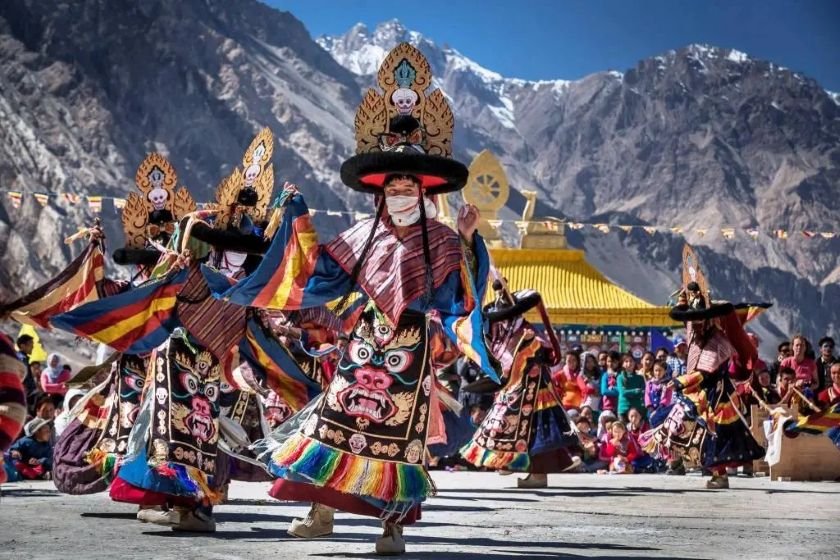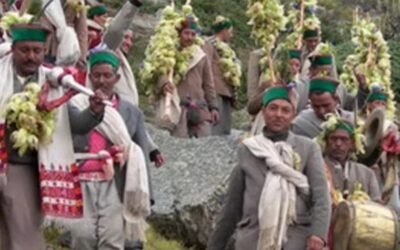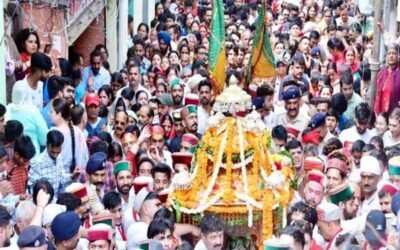📍 Location: Lahaul-Spiti District (primarily in Keylong, Kaza, and monasteries like Key, Tabo, and Dhankar)
📅 Season: Late January to mid-February (varies by lunar calendar)
Where winter bows to spirit, and the high-altitude silence becomes music
🕊️ A New Year Etched in Prayer
Losar, meaning “New Year” in Tibetan, is not just a calendar change—it’s a profound spiritual reset. Rooted in Bon and Tibetan Buddhist traditions, Losar stretches back over 2,000 years and is observed with rituals to banish negativity, invoke blessings, and strengthen community bonds.
🗻 In Spiti’s stark white landscape, Losar becomes a lantern of hope, lit through prayer flags, butter lamps, and masked dances.
🔱 Rituals of Cosmic Renewal
Losar preparation begins days before the New Year with homes and monasteries undergoing spiritual cleansing:
- House Purification: Families clean, paint, and decorate homes to invite peace and prosperity
- Gutor Rituals (two days before Losar): Monks perform dances and burning ceremonies to drive out evil spirits and bad karma
- Chamm Dances: Monastic masked dances symbolizing triumph of wisdom over ignorance
- Offerings to Deities: Tormas (sculpted barley and butter effigies) are placed in shrines alongside incense, rice, and flowers
Monasteries fill with chants as laypeople offer prayers, food, and light to the gods and ancestors.
🧥 Culture in Full Bloom
Losar is also a time to showcase Tibetan culture and hospitality:
- Traditional Dresses: Locals wear vibrant chupas and silver-studded jewelry
- Festive Songs & Dances: Performed in monasteries and village squares—some tell Buddhist parables, others celebrate nature
- Decorative Art: Thangka paintings and mandalas created and displayed as symbols of healing and prosperity
Even children participate—reciting verses, offering snacks to guests, and joining processions with prayer flags.
🍜 The Flavors of Losar
Food is central to Losar joy:
- Guthuk: A noodle soup served on Gutor night, filled with symbolic ingredients like chilies, wool, or paper notes to reflect personality traits in a playful ritual
- Kapse: Fried pastries shaped into knots and flowers
- Butter Tea (Po Cha) and barley beer (chang) are shared among families and guests
- Dry fruits and roasted barley offered to monks and elders as blessings
Each bite carries warmth against the alpine chill and a taste of community.
✨ Why Losar Endures
Losar isn’t flashy—it’s deep and elemental, a fusion of sky, snow, fire, and faith. It marks:
- The renewal of spirit and space
- Unity across generations—from monks to children
- Hope blossoming in harsh terrain
It’s Lahaul-Spiti’s way of saying: even in winter’s grip, the soul dances on.
🧭 Plan Your Visit
To truly feel Losar:
- Best Time: Late January to mid-February; check monastery calendars
- Where to Go: Key Monastery (Kaza), Tabo Monastery, Dhankar Gompa, and villages like Kibber and Losar
- Travel Tip: Dress warmly, carry prayer scarves (khatas), and ask locals about Gutor customs—they’ll open doors to unforgettable tales
- Stay Options: Monastery guest rooms (if permitted), homestays in Kaza or Tabo, or eco-lodges with cultural immersion




